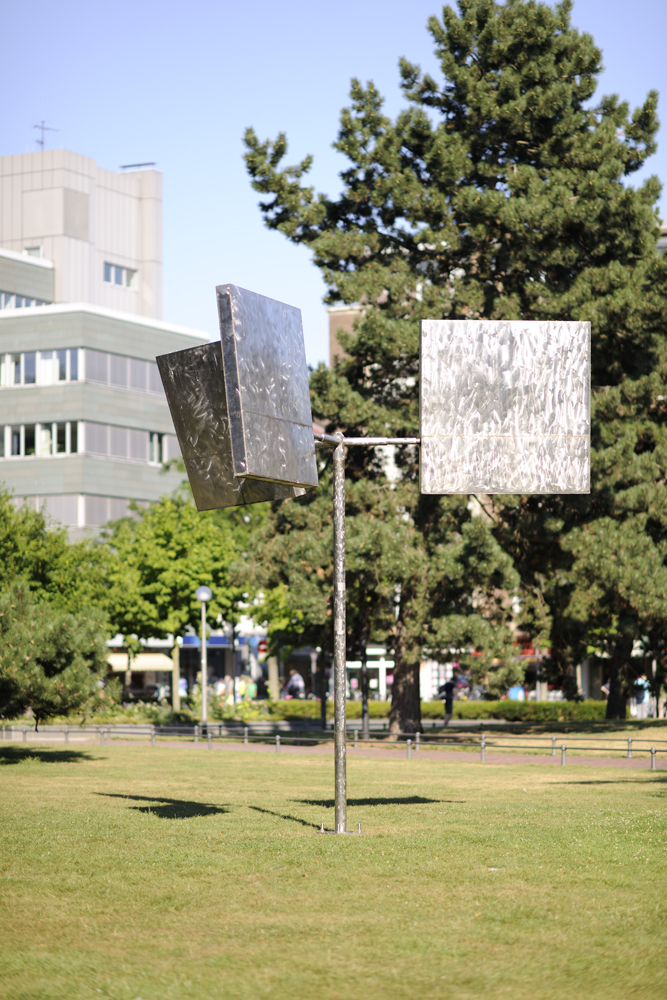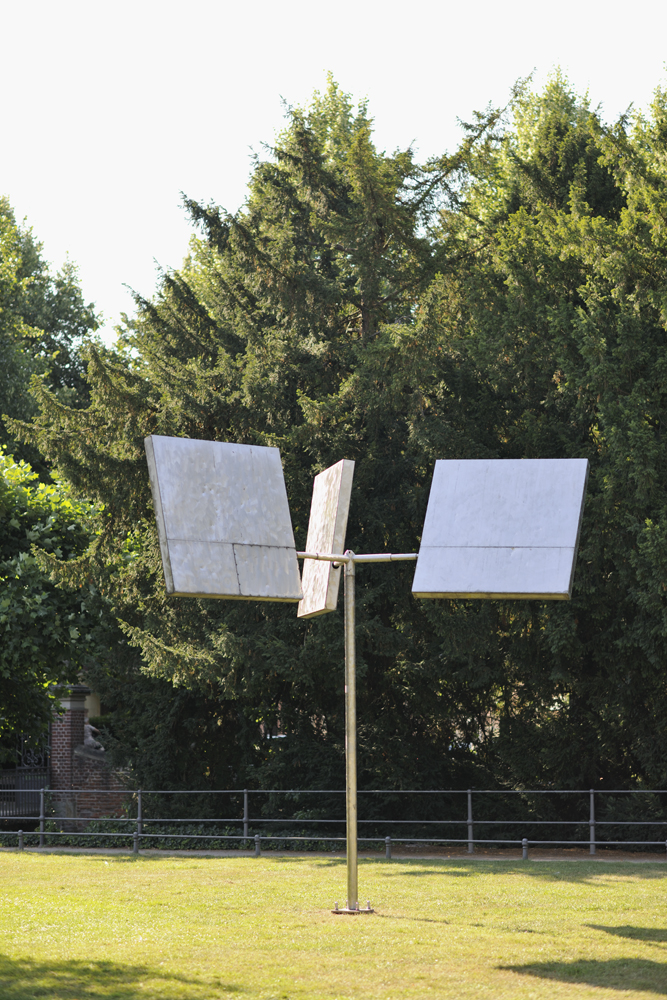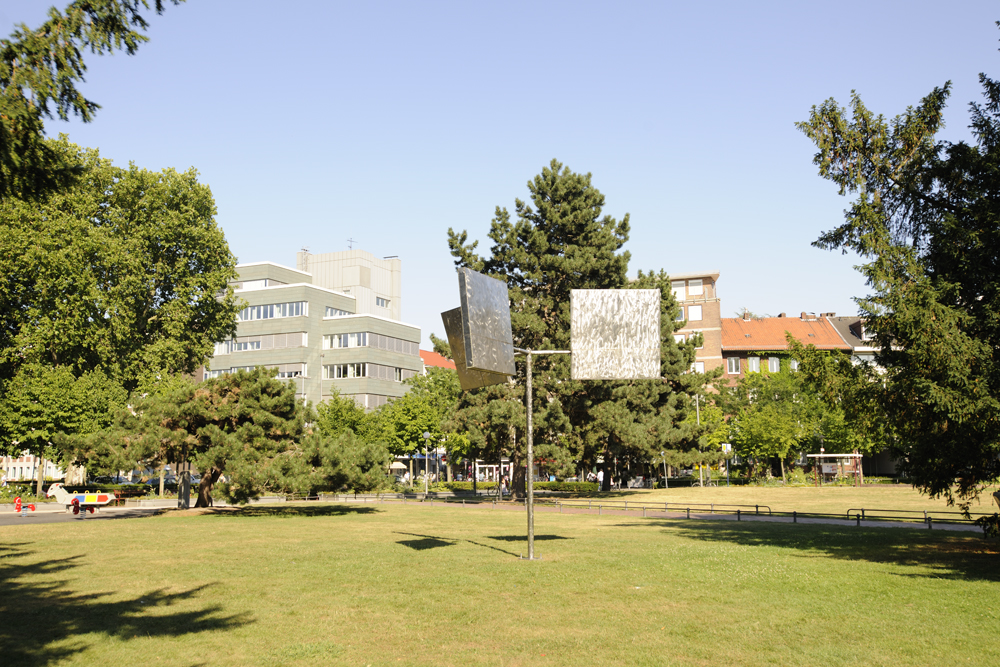Three Rotary Squares





It hard to imagine today that the sculpture Three Rotary Squares (1975) was met with controversy and numerous protests when it was first exhibited. Nonetheless, exhibiting modern art in public spaces seemed “inappropriate” to many people at the time. Today, on the other hand, the sculpture is acknowledged for its restrained aesthetic and poetic presence.
Three horizontal axes are mounted on a steel rod that is anchored into the ground. Each one carries an aluminum square. Even with the slightest breeze, the square surfaces set in motion and they begin to rotate around the central axis when driven by stronger winds. George Rickey, a major player in kinetic art, perfected his technique to the extent that the moving elements in his sculptures seem to float weightlessly and perform an ever-changing choreography depending on the light and wind.
Additional information: http://wiki.muenster.org/index.php/George_Rickey
George Rickey
← Zur Startseite
Münster, green area along the promenade, Engelenschanze
